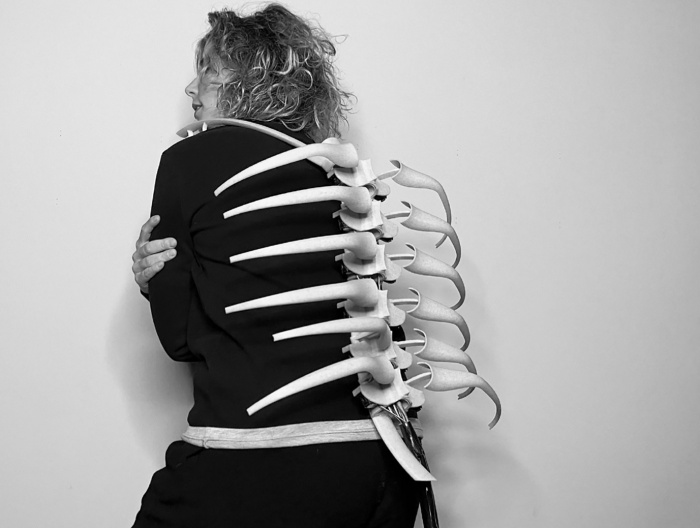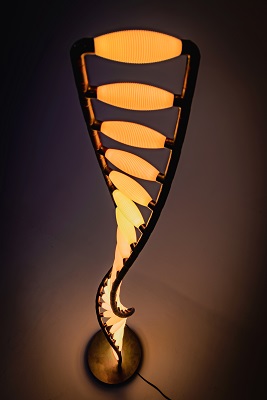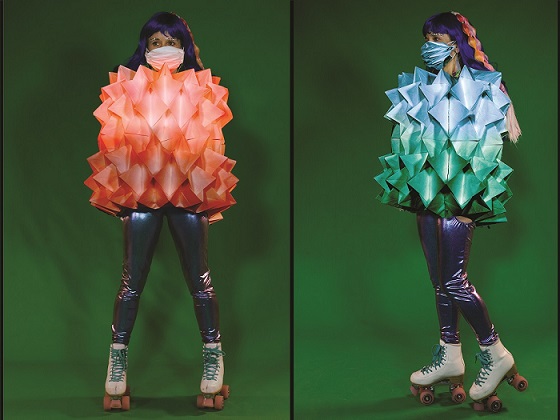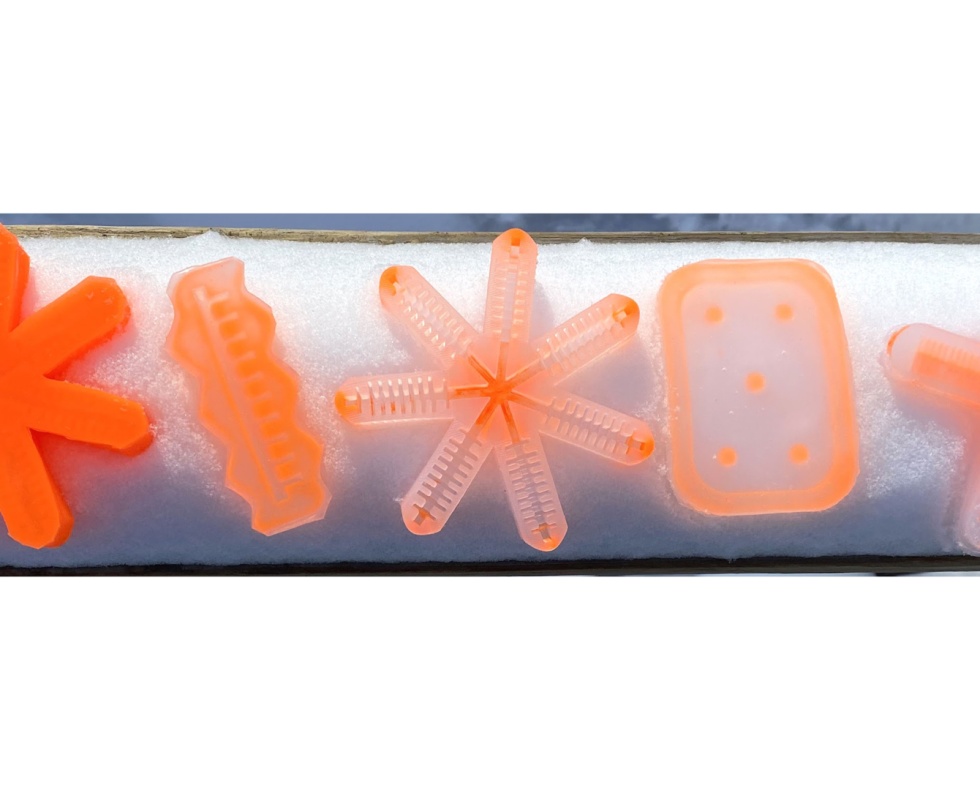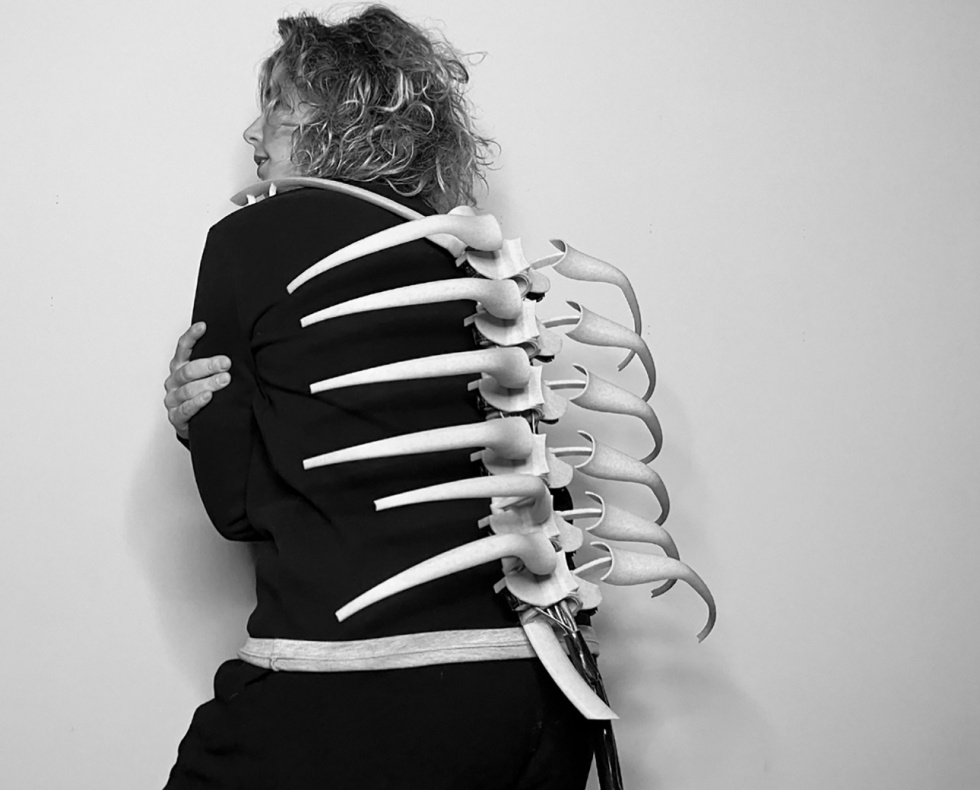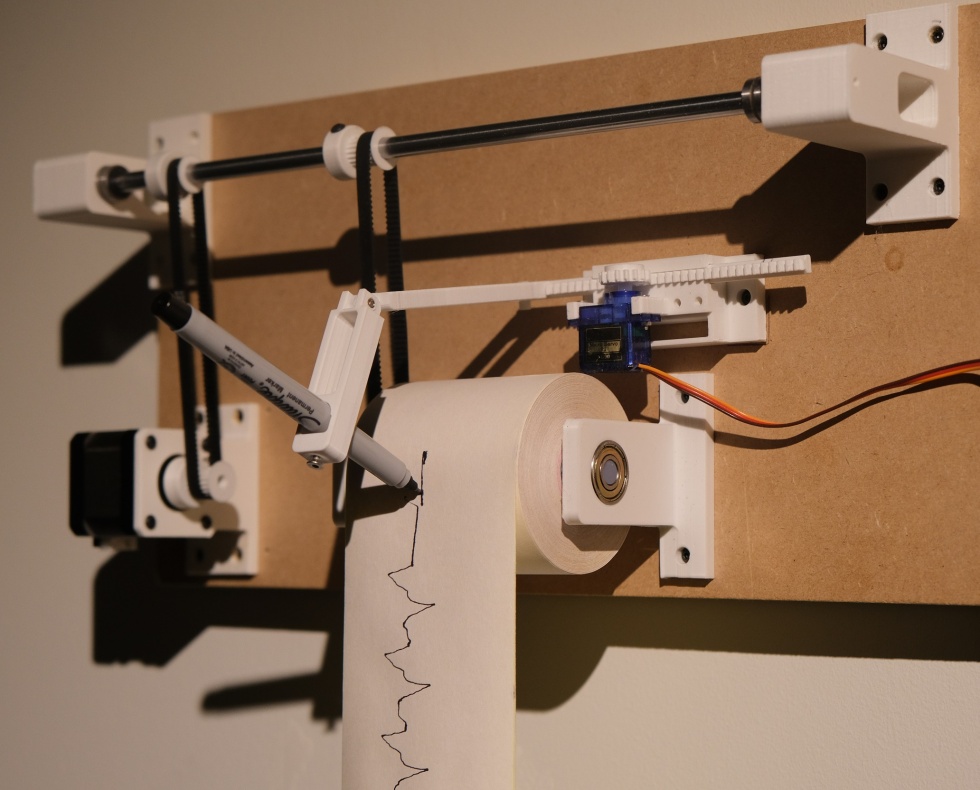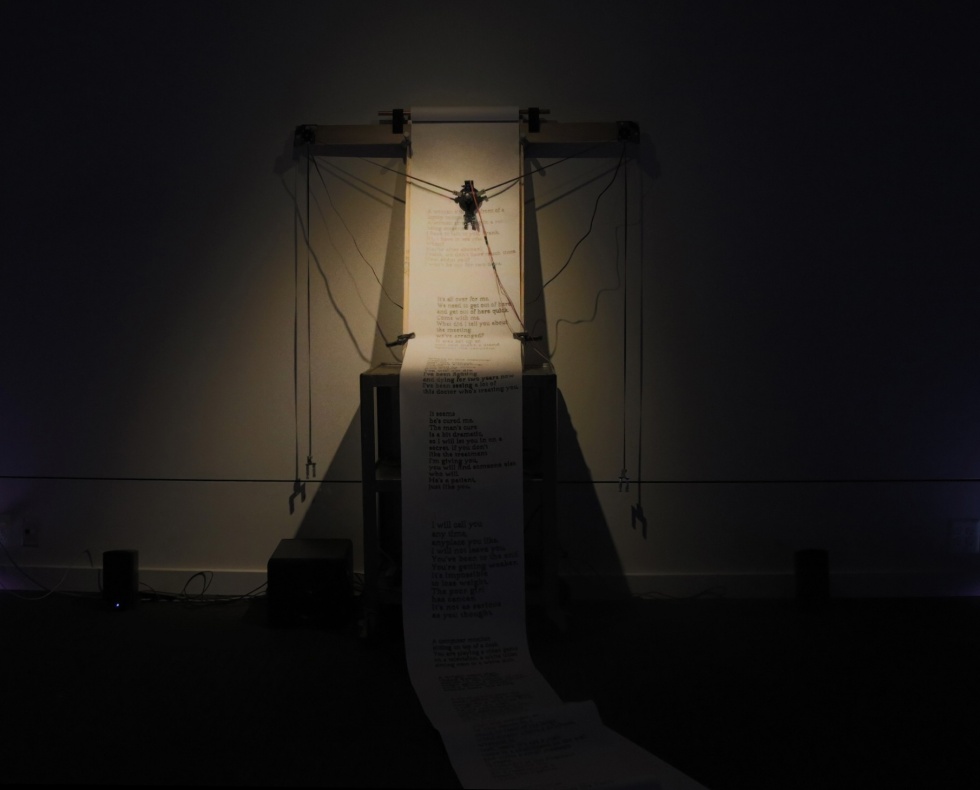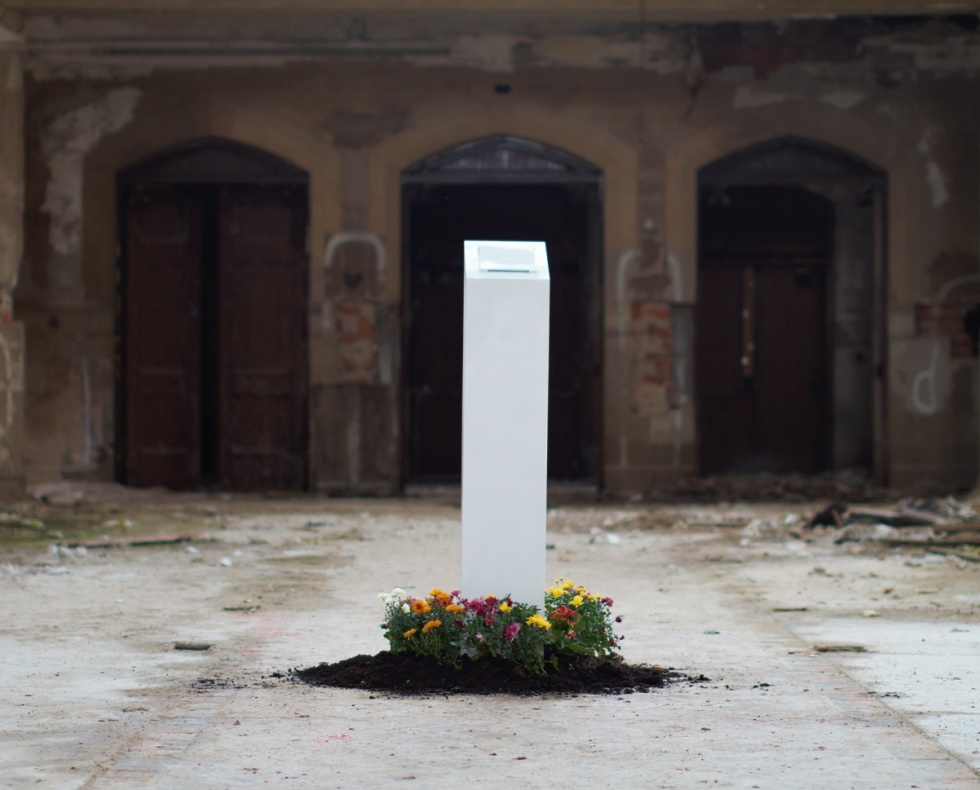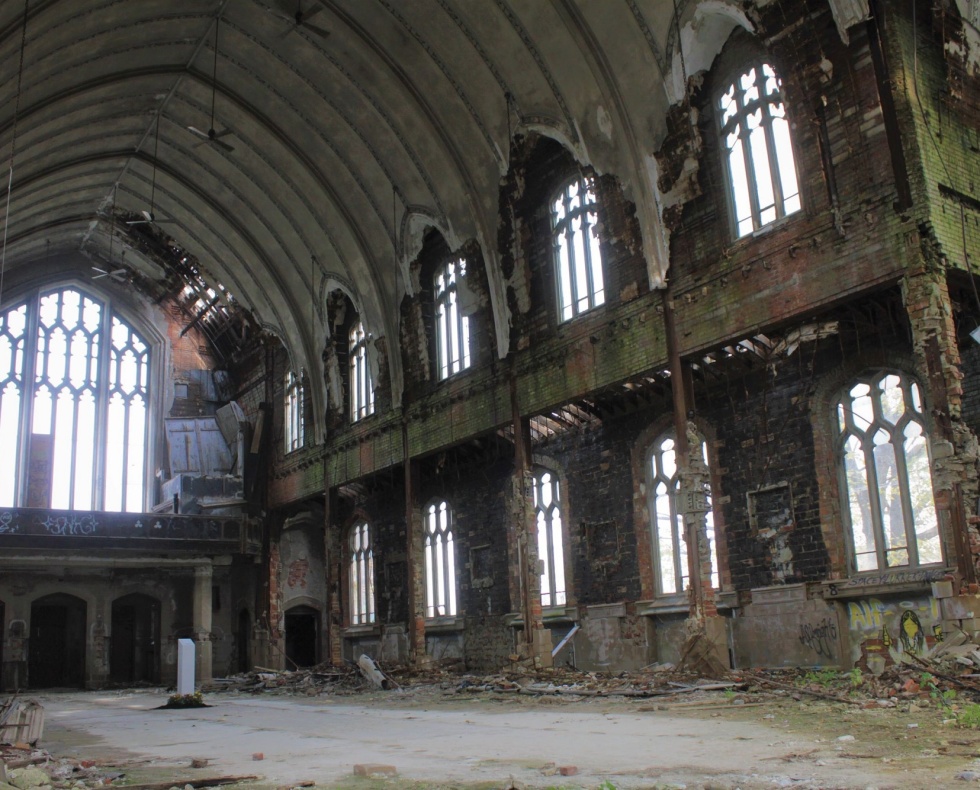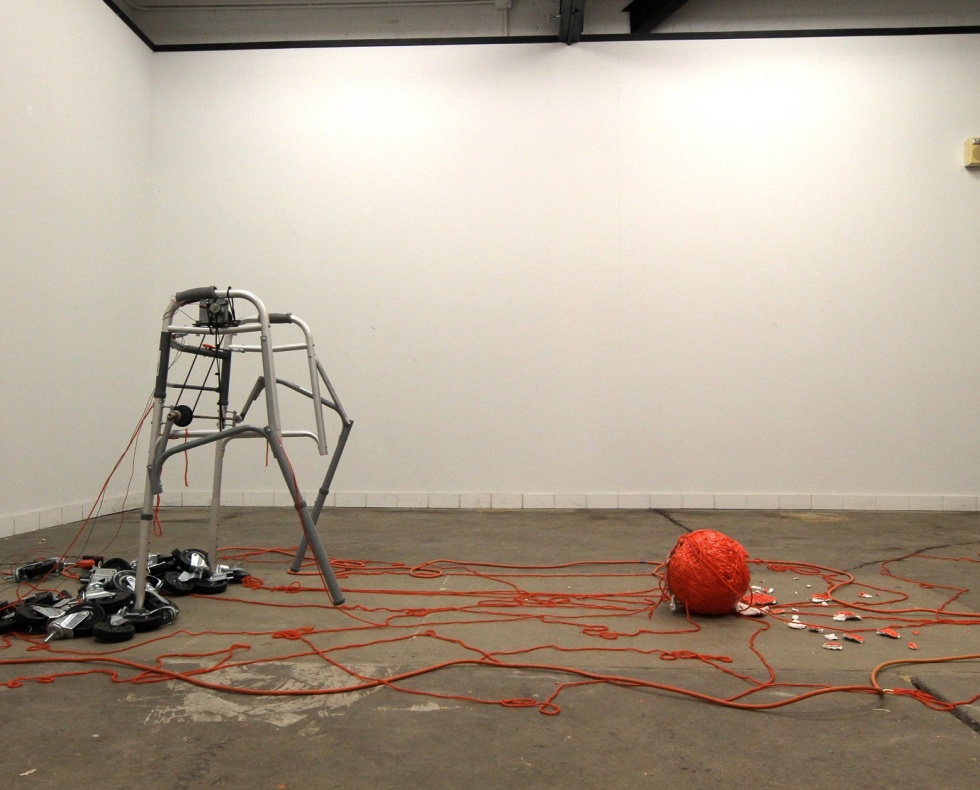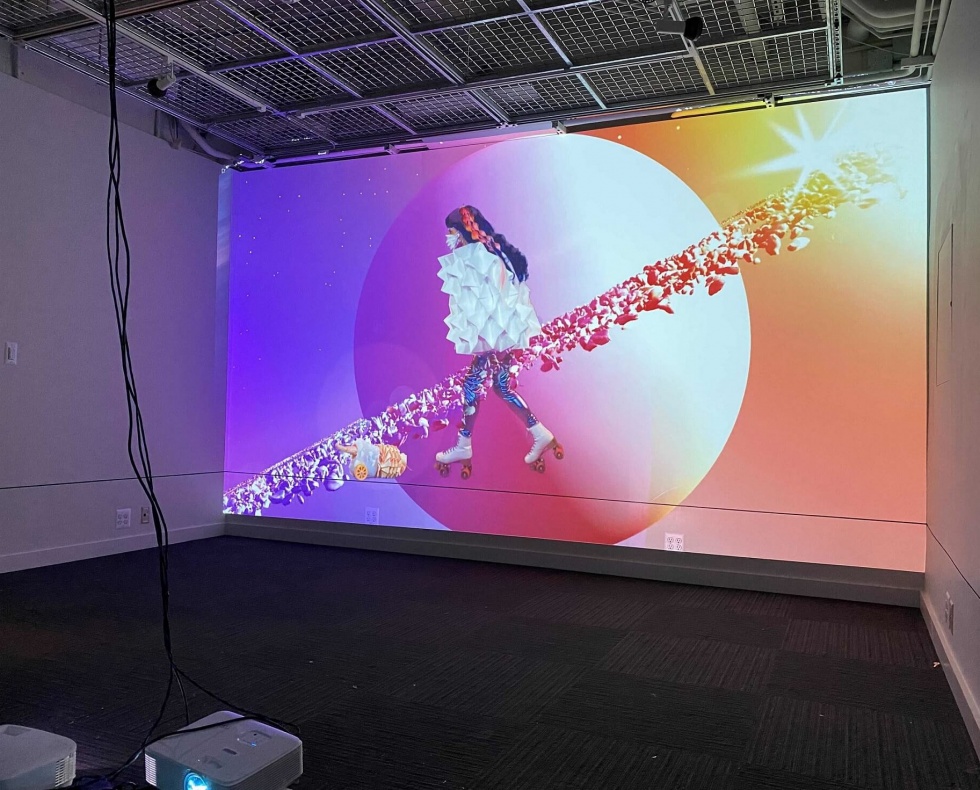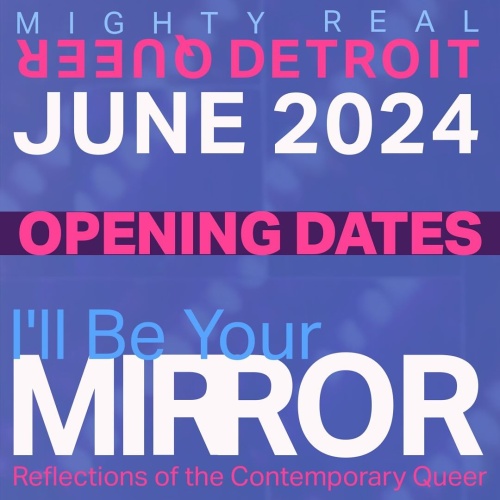Michael Candy (MFA 4D Design 2023)
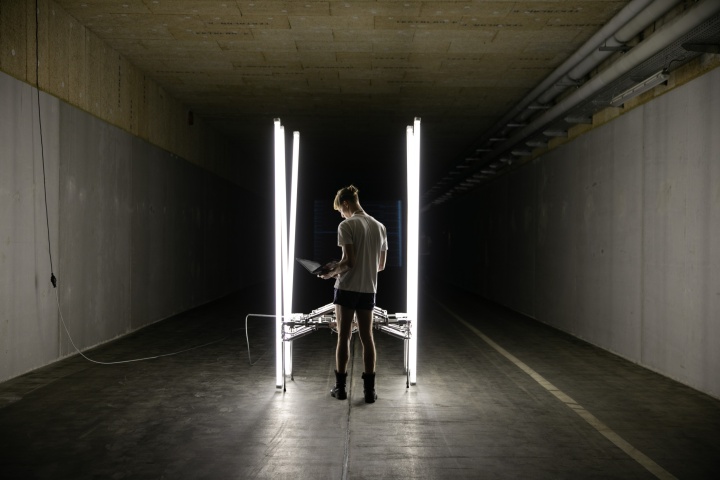
Interaction Design Philosophy
Interaction Design Philosophy
A distributed network of activists, artists, authors, designers, engineers using technology to solve complex problems and discover innovative new forms through coding, tinkering, and obsessive making
The impact of technology on the field of design is profound. Established in 2019, the Academy’s newest department builds on a legacy of innovation by expanding the skillsets of designers to include Experience Design (XD, UX), Interaction Design (IxD), projection mapping, embedded electronics, applied robotics, 3D printing, visual interfaces, and virtual/mixed reality environments. These emerging processes are situated alongside more traditional modes of making, and we believe in a democratic approach to understanding and accessing technology.
Interaction Design at Cranbrook explores the many ways the physical world around us is infused with an undercurrent of flowing data that turns everyday experiences into connected, feedback-driven interactions that transform culture and society. Interaction Design students weave technology into their work through thoughtful, responsible, and compassionate design, while actively shaping the world.
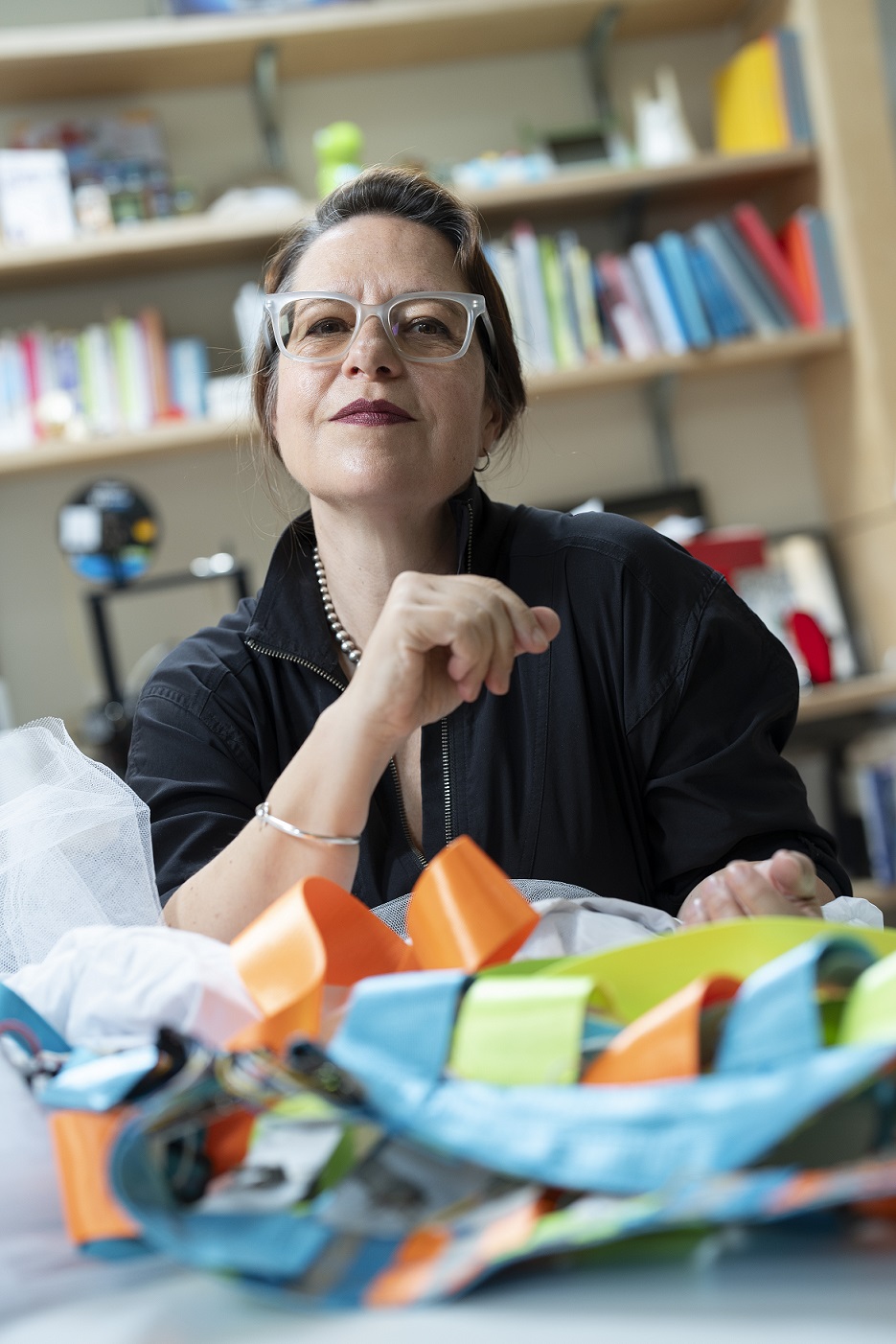
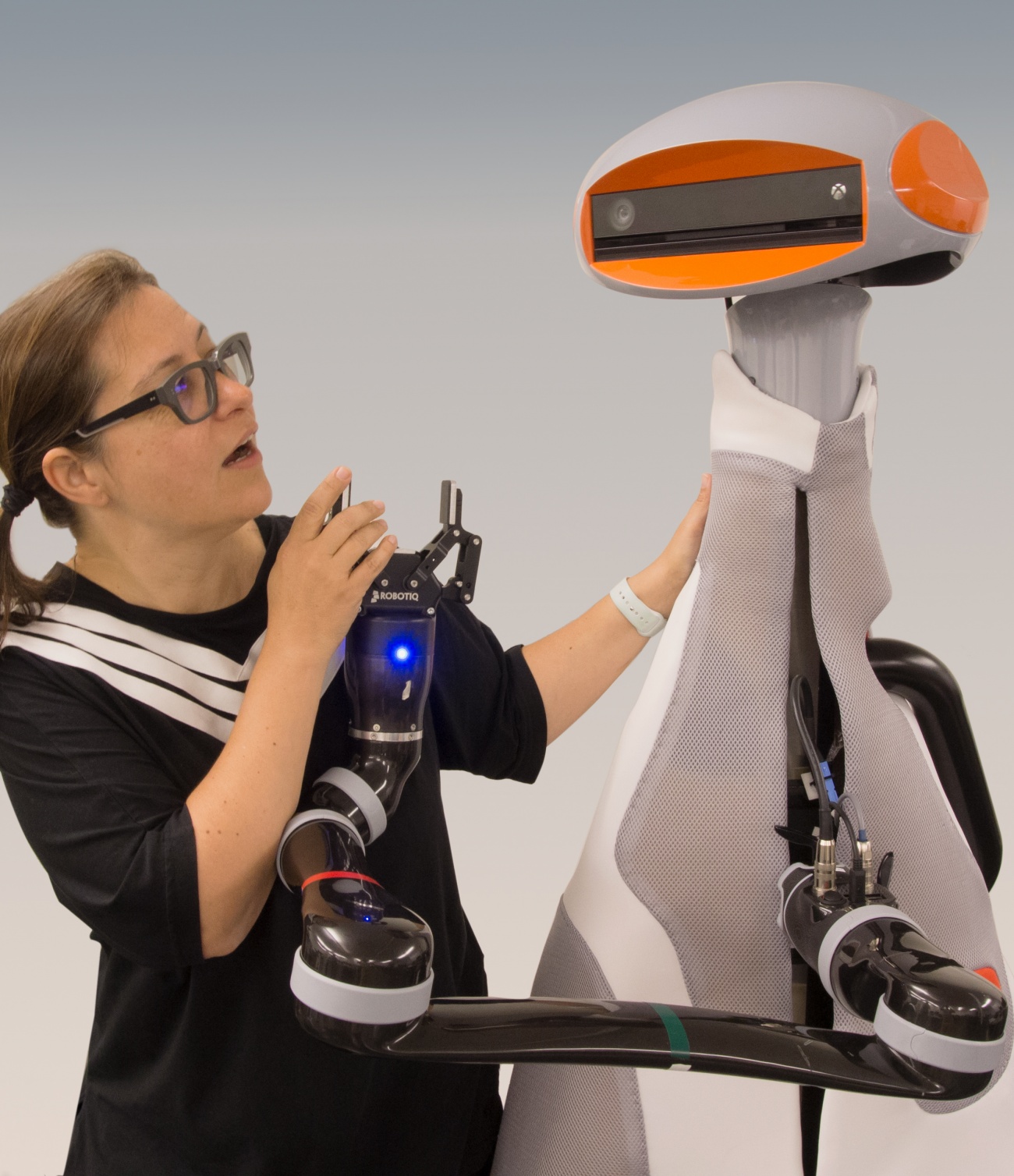
Designer-in-Residence
Designer-in-Residence
Carla Diana
Carla Diana is the founder of the 4D Design program at Cranbrook. She is a designer, author, and educator who explores the impact of future technologies through hands-on experiments in product design and tangible interaction. In addition to her studio practice, she is Design Advisor and former Head of Design for Diligent Robotics, an Austin, TX, based company where advances in artificial intelligence and machine learning manifest in robot assistants to help healthcare workers.
Carla has been part of innovation design firms Smart Design and frog where she worked on a range of products from robots to connected home appliances. Her work has appeared on the covers of Popular Science, Technology Review, and The New York Times Sunday Review.
Carla writes and lectures frequently on the social impact of robotics and emerging technology. Her latest book, My Robot Gets Me: How Social Design Can Make New Products More Human (HBR Press 2021) discusses design strategies for incorporating robotics and A.I. into everyday interactions. She is the creator of the world’s first children’s book on 3D printing, LEO the Maker Prince, and former co-host for the Robopsych Podcast, a show that explored the design and psychological impact of human-robot interaction.
Interaction Design
To strengthen collaboration and connectivity across disciplines, we are uniting our Architecture, Industrial Design, and Interaction Design programs into the newly organized Architecture and Design department.
This reorganization will create a vibrant hub where students can engage with a larger peer community, share ideas, and develop solutions that transcend traditional boundaries.
The Interaction Design program will continue to be led by Carla Diana, who will collaborate closely with colleagues in the Architecture and Industrial Design programs. Students will continue to specialize in their chosen fields of study while gaining expanded access to shared resources, new opportunities, and collaborative experiences.
These changes reinforce the Academy’s commitment to excellence and preparing students to be leaders in their fields. We are confident this evolution will inspire creativity, nurture innovation, and ensure the continued success of our students while honoring the Academy’s legacy.
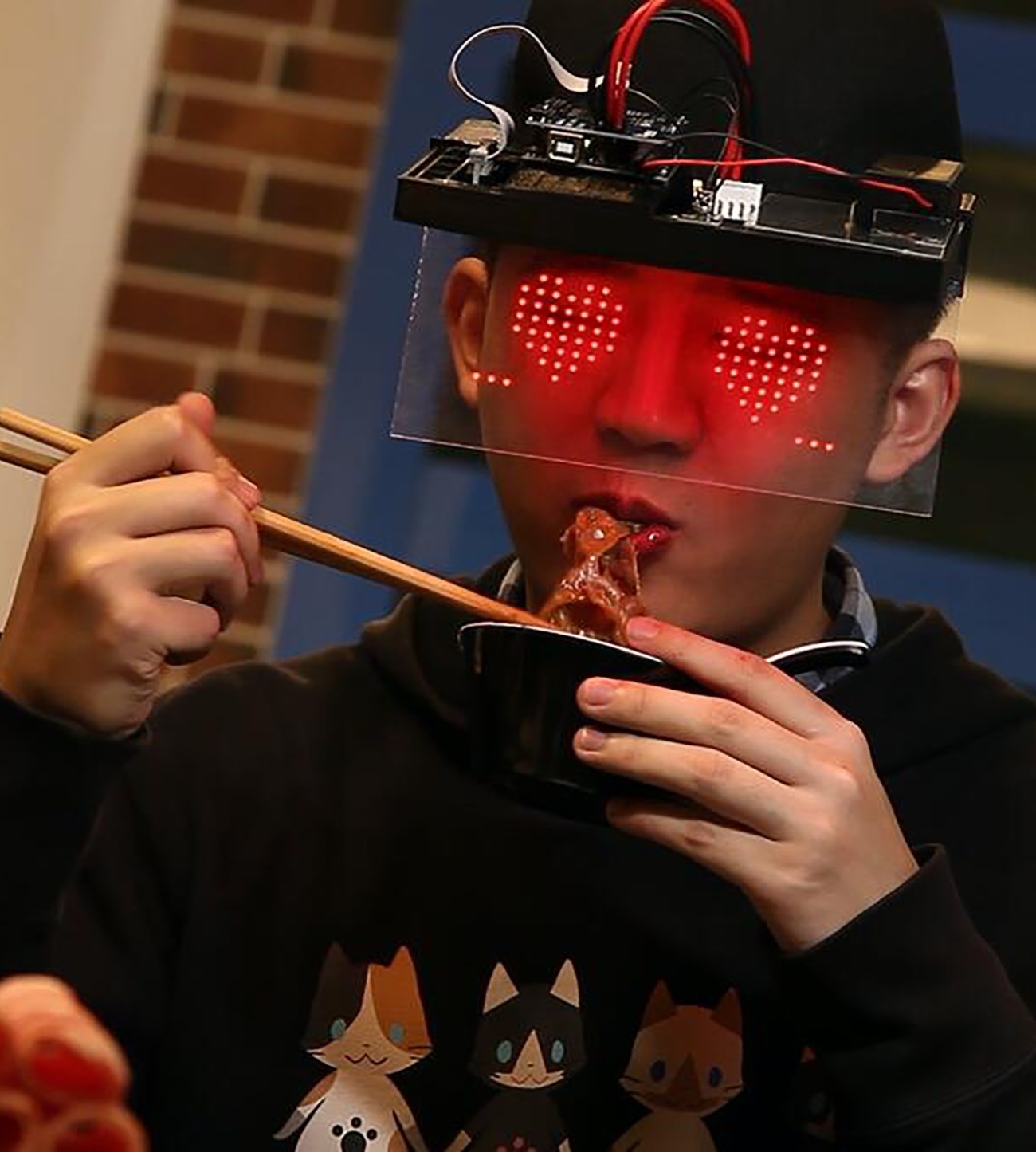
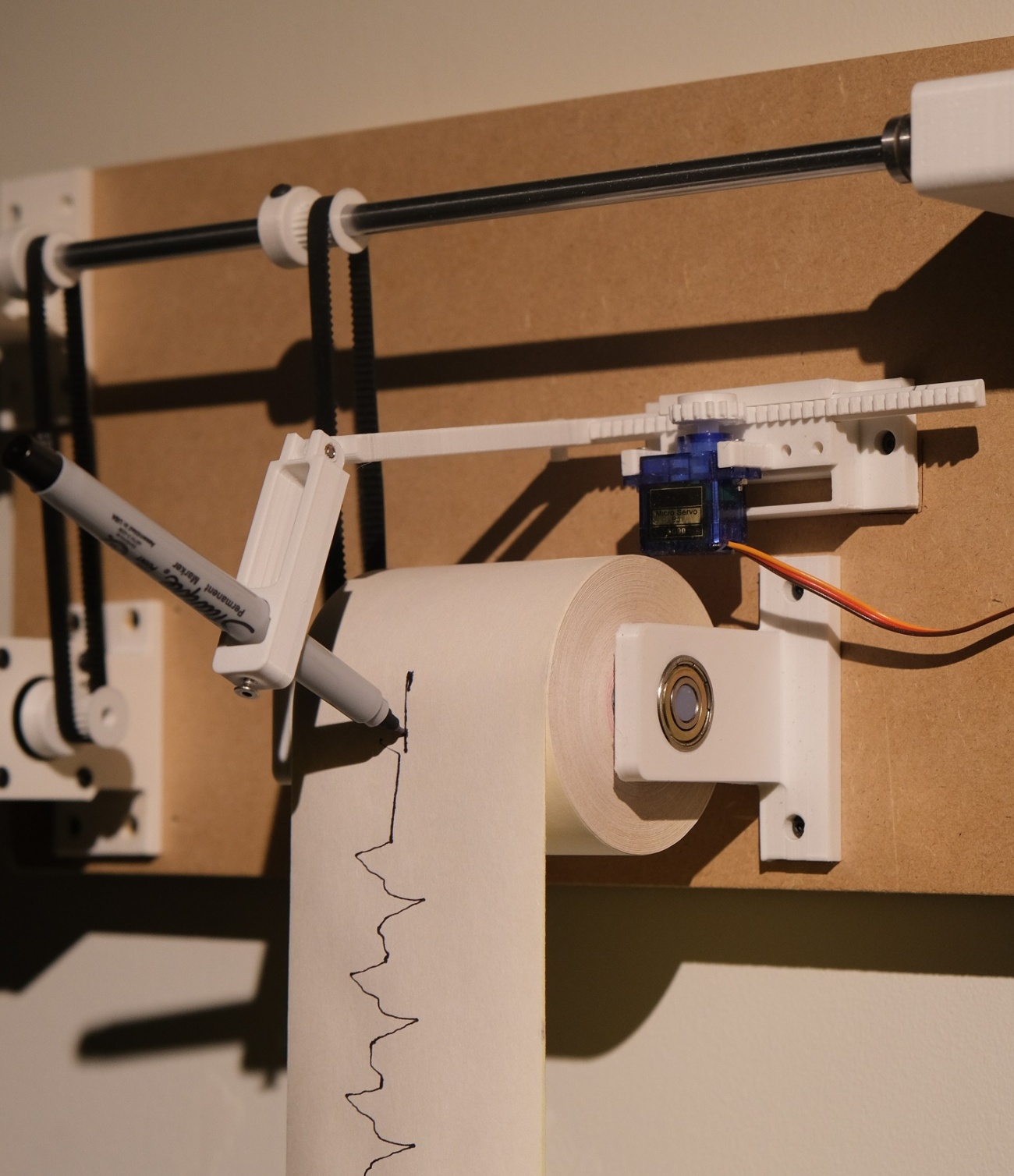
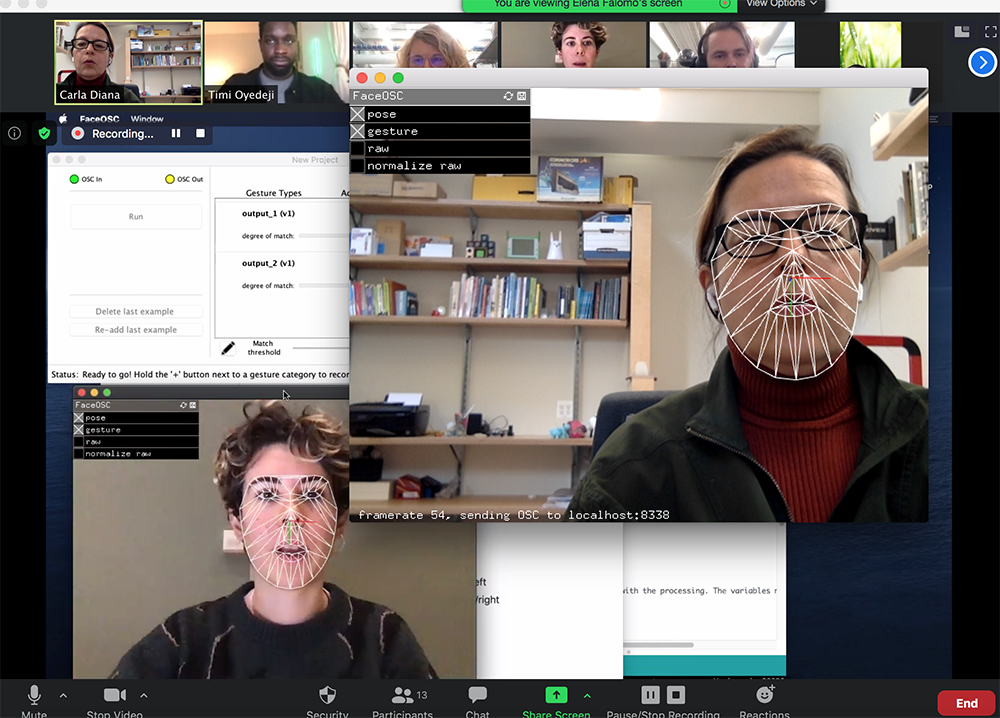
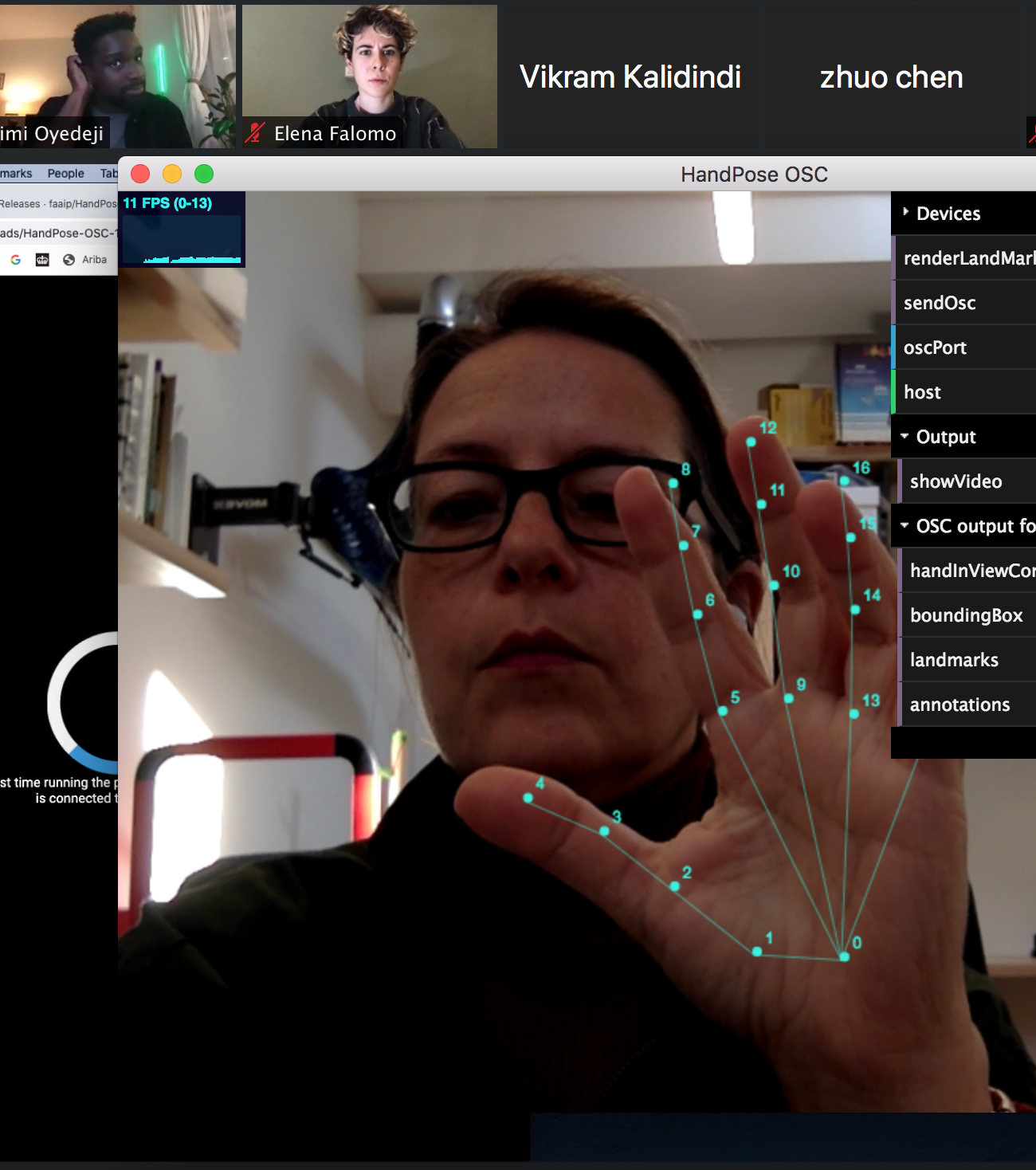
Interaction Design Program
Interaction Design Program
A culture of exploration and risk taking, with the flexibility to develop a work at a variety of scales
The Interaction Design department is well suited for applicants with a foundation in technical disciplines such as engineering and computer science and those with specialized art, design, and architectural experience. The department challenges students to consider the impacts of technology on contemporary culture and delves deeply into subjects such as generative AI, ethics of technology, digital fabrication, virtual world-building, and more.
Each cohort is a carefully curated mix of artists, designers, and technologists whose background and experience contribute to the diversity of the community and encourages skill sharing and the rapid exchange of knowledge. Self-directed studio work and group design projects are supplemented by regular readings, seminars, and weekly critiques. Departmental visitors bring new perspectives from a variety of fields, and group dinners in the studio provide lasting connections and professional networking opportunities.
Still have questions about the program? Are you wondering, “what is the fourth D?” Click on our “Frequently Asked Questions” below for more information.
Interaction Design
Interaction Design students build upon the following areas of exploration:
-
1. Dynamic product behaviors
-
2. Machine learning
-
3. Expressive coding
-
4. Systems visualization
-
5. Embedded electronics and applied robotics
-
6. Connected devices and product ecosystems
-
7. Augmented, virtual and mixed reality
-
8. Voice control and conversational interfaces
-
9. 3D printing and material creation
-
10. Biometrics, prosthetics, and augmentation
-
11. Telepresence and avatars
Carla Diana
The Cranbrook Experience in Interaction Design
Carla Diana
The Cranbrook Experience in Interaction Design
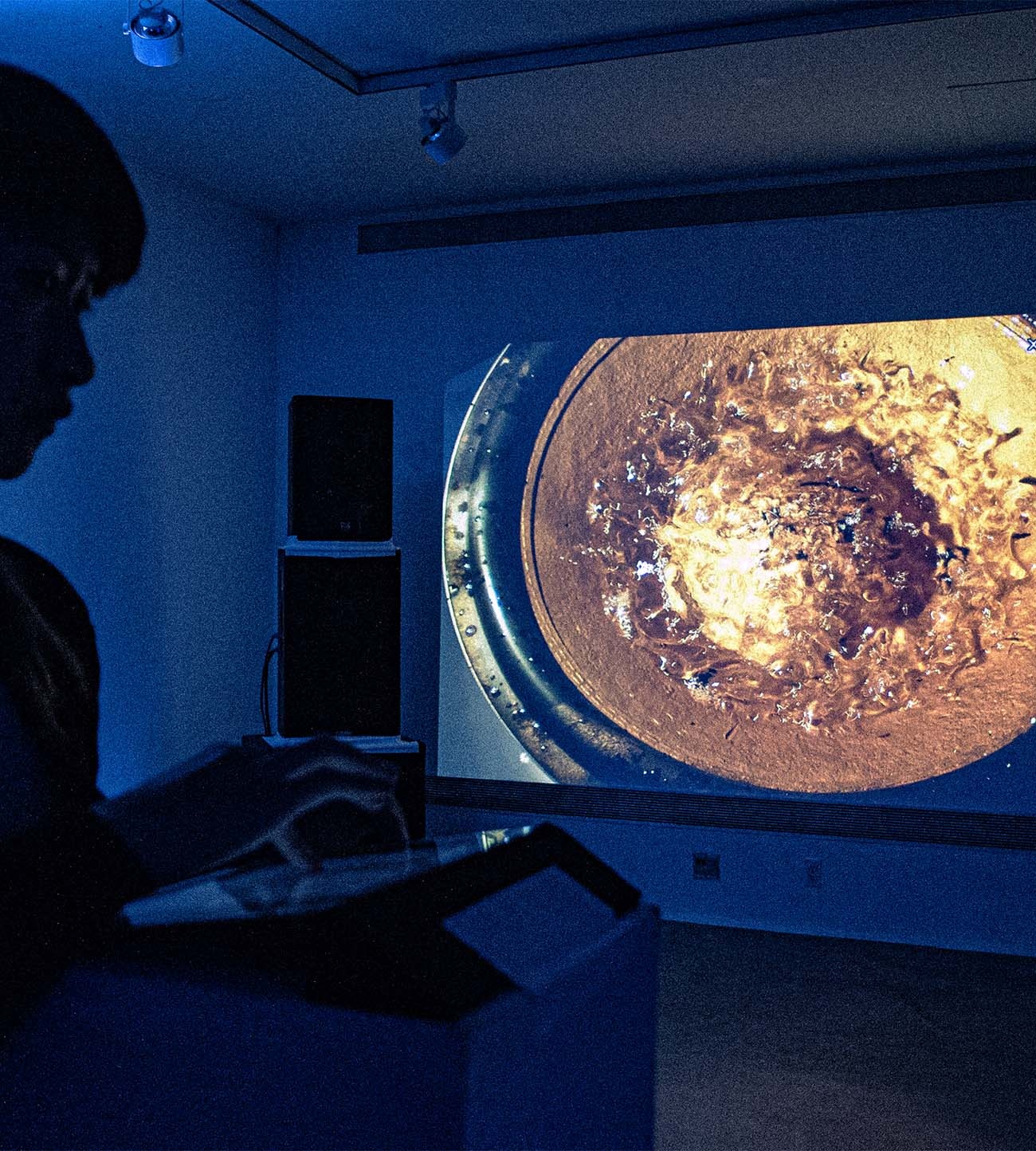
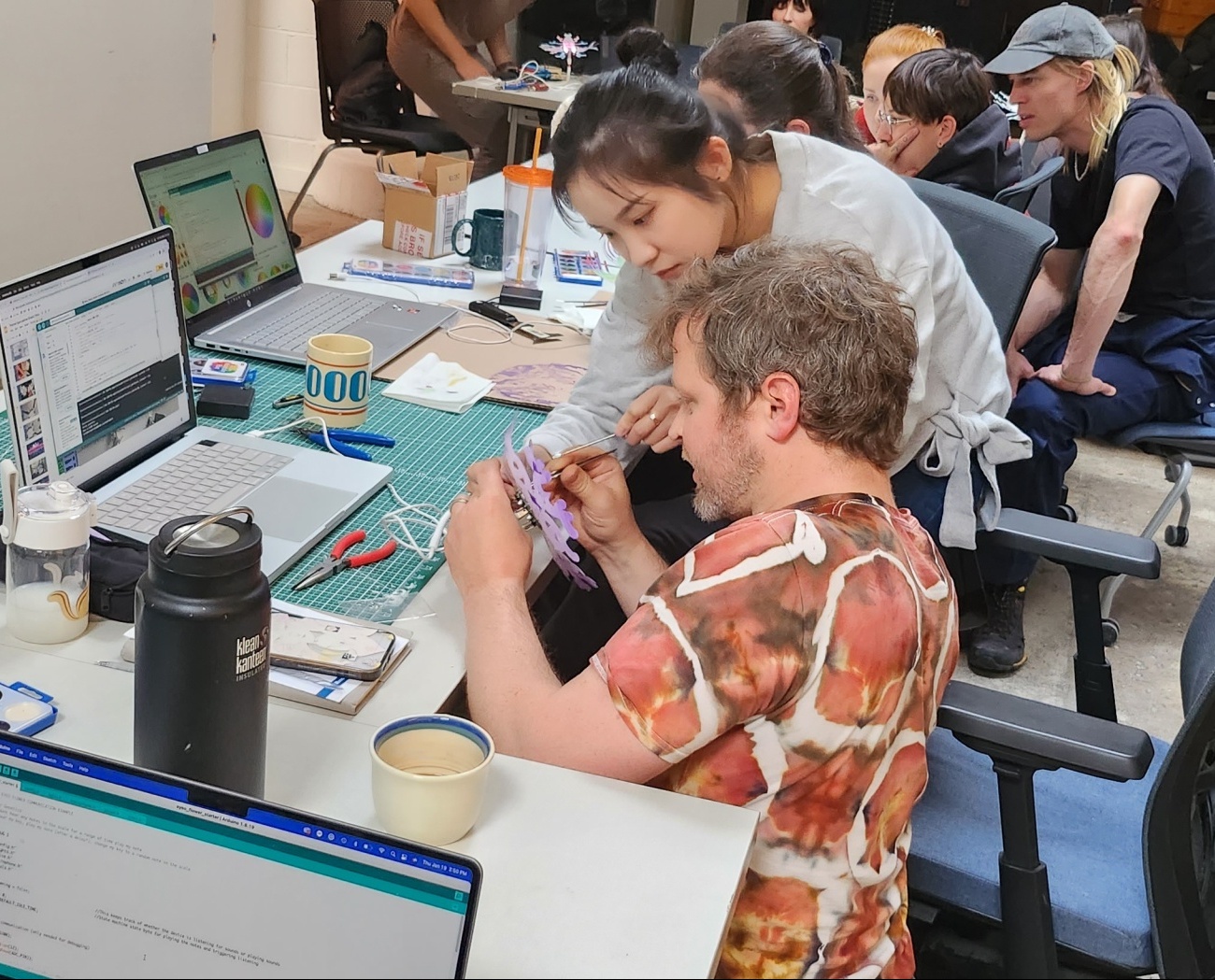
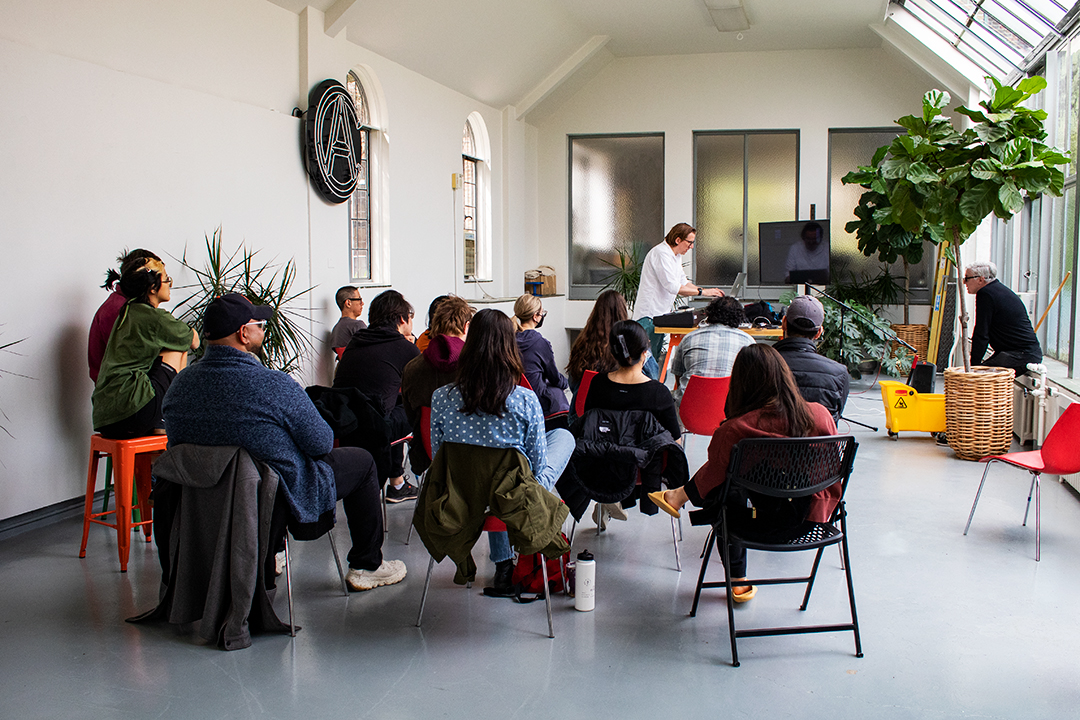
Interaction Design Visiting Artists/Critics
Interaction Design Visiting Artists/Critics
Leading figures working at the intersection of emerging technology and design
Interaction Design visitors are selected in response to the direction of work taking place in the studio, and their unique ability to contribute to the collective voice of the program. They work with students through workshops, studio visits, group critiques, and design charrettes, as well as presenting lectures on their professional practice, and using the studio as a testing ground for new ideas.
Recent visitors have presented workshops on 3D scanning technology and the use of robotic muscle wire to activate objects, led discussions on the implications of NFTs, and collaborated on large-scale projection mapping. Many of our visitors maintain an ongoing connection to the department and are frequently available to students as professional resources and project consultants. Group dinners in the studio provide another way to engage with visitors and these connections often lead to personal connections and professional development opportunities.
-
Motomichi Nakamura
-
Nervous System
-
Tomorrow Lab
-
Brendan Dawes
-
Emilie Baltz
-
Lawrence Axerod and Richelle Ellis
-
Dave Vondle
-
Matt Kenyon
-
Kevin Henry
-
Ashley Zelinskie
-
Matt Cottam
-
Madeline Schwartzman
-
Amos Timi Oyedeji
-
Sophie Kahn
-
Breakfast Studios (Zolty and Mattias Gunneras)
-
Ray LC
-
Rob Walker
-
Chris Reilly
Select Catalysts
Select Catalysts
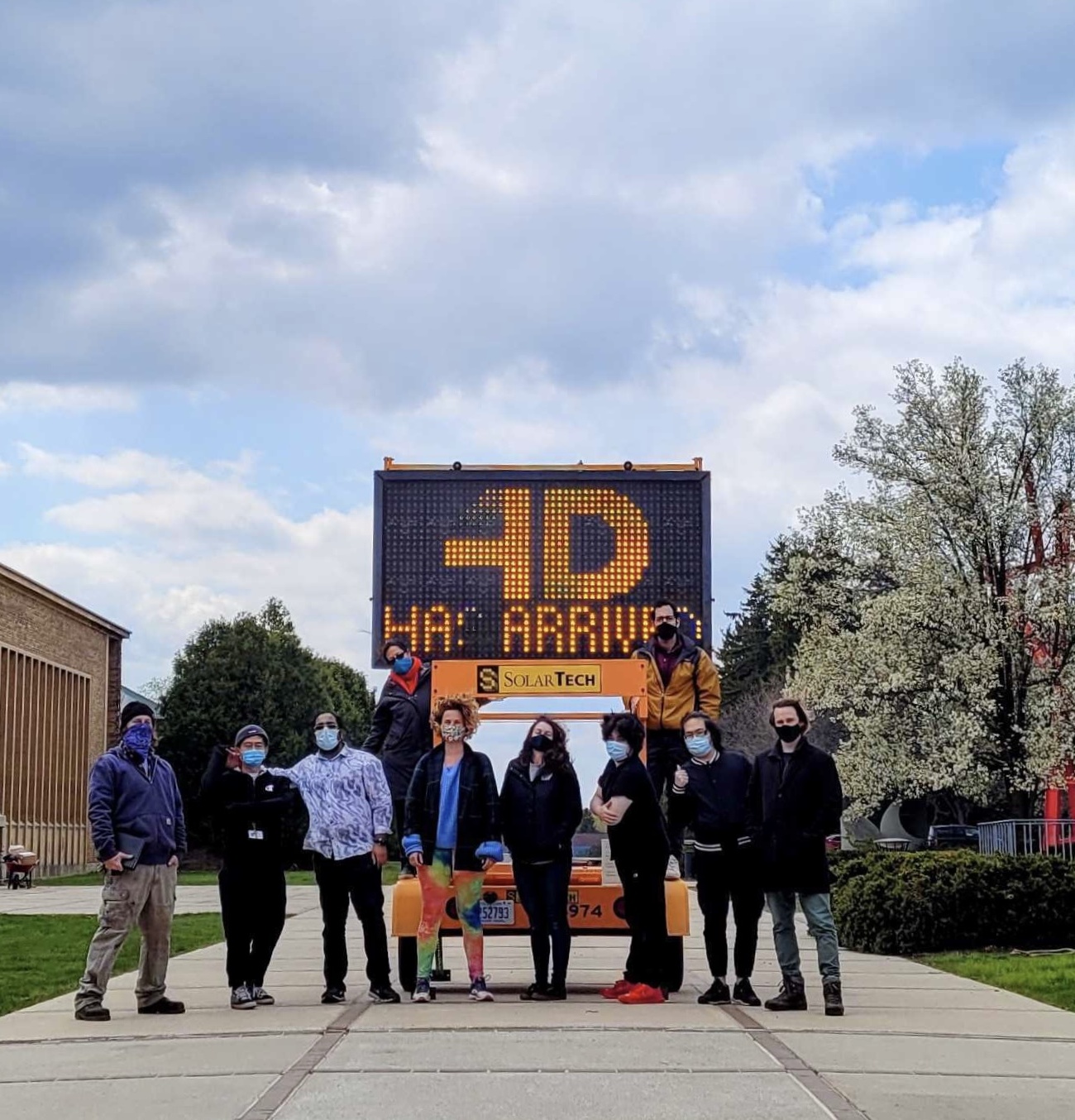
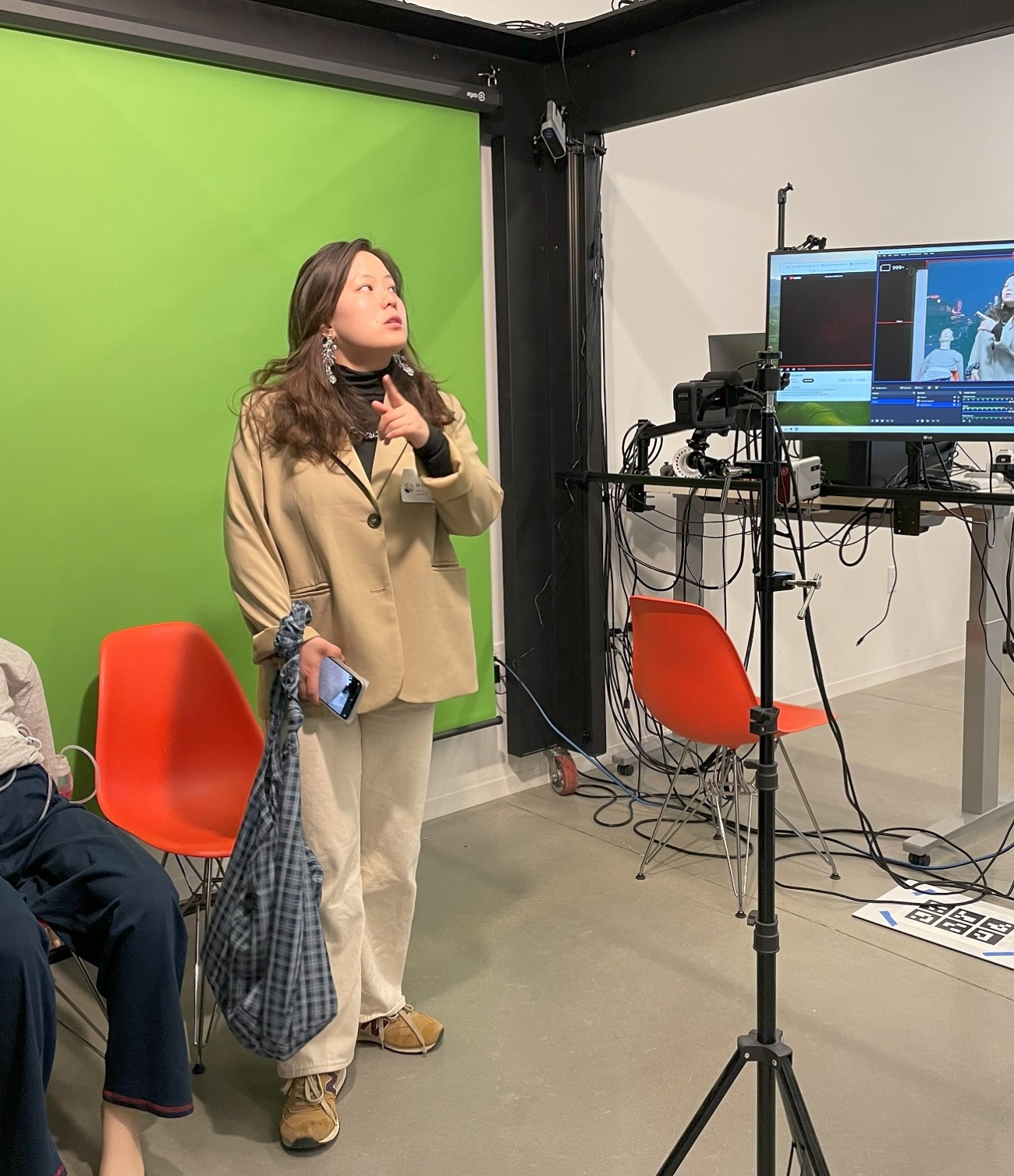

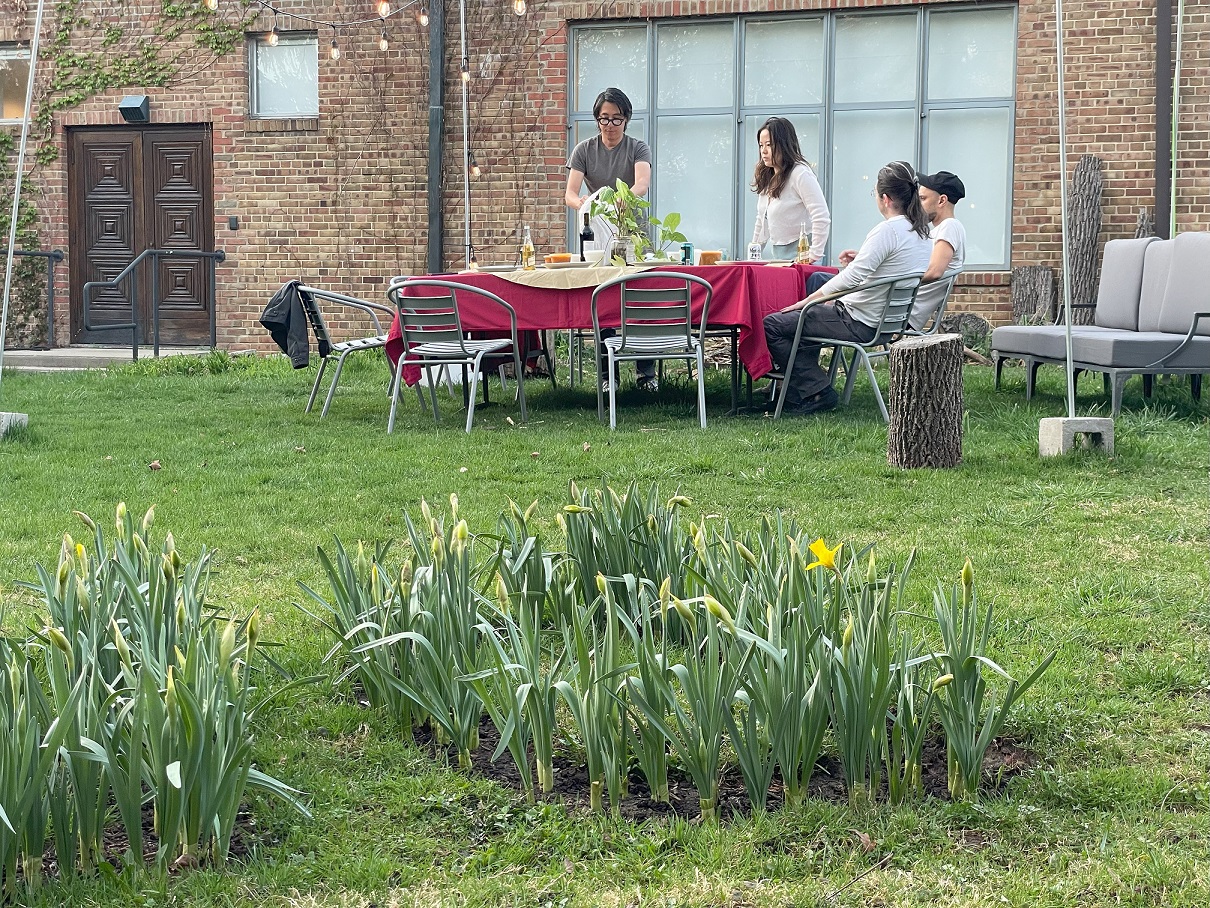
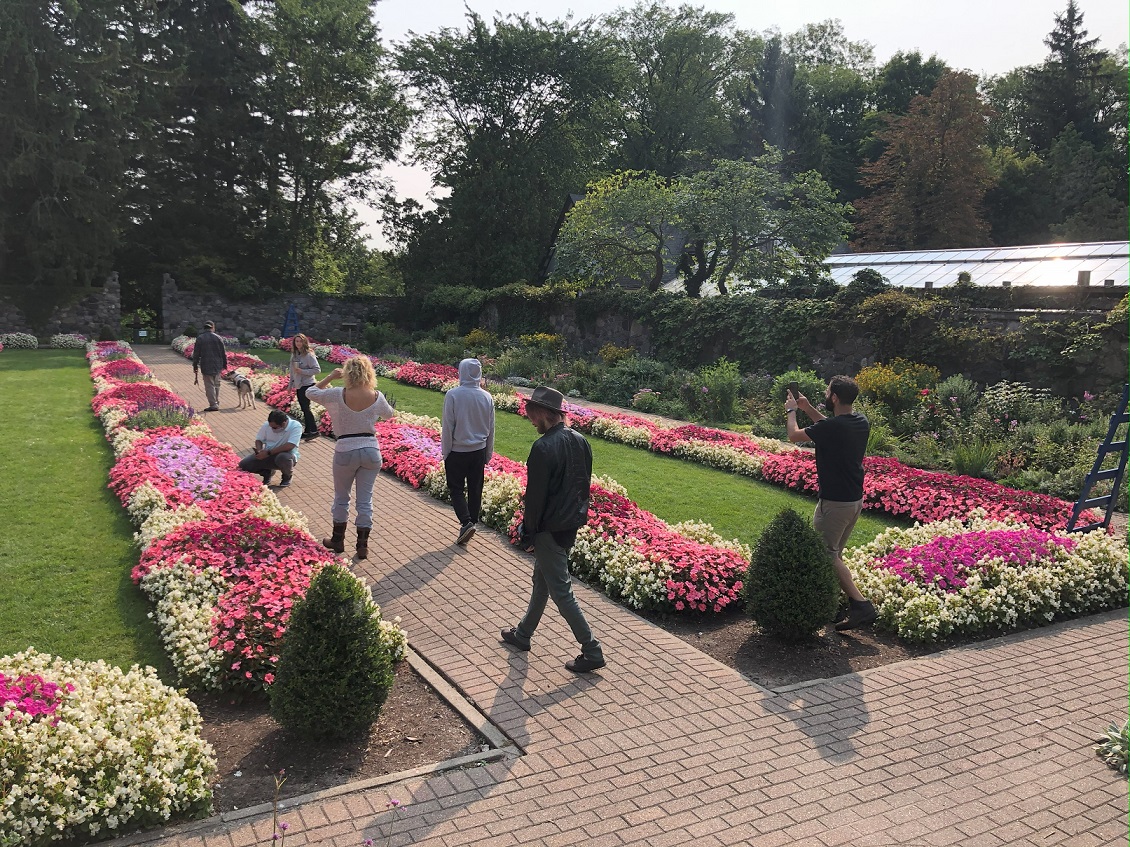
Interaction Design Experience
Interaction Design Experience
Self-initiated and sustained studio work is at the core of the department
As makers, our studio culture is based on collaboration and exchange. We actively teach each other new processes and trade tips about everything from motor control to AI prompt writing and collaborative VR sketching. We are regularly flying drones, creating outdoor installations, staging exhibitions, and writing code – the possibilities for exchange and peer-to-peer learning are limitless.
Interaction Design regularly visits design firms, artist studios, tech facilities, and university labs, for behind-the-scenes visits with leading artists, designers, and scholars. Students are provided ongoing feedback through regularly scheduled critiques and take part in reading groups, seminars, critiques, and studio visits. The studio of Carla Diana, Designer-in-Residence, is housed in the Interaction Design department and a common kitchen and social area further encourage community building.
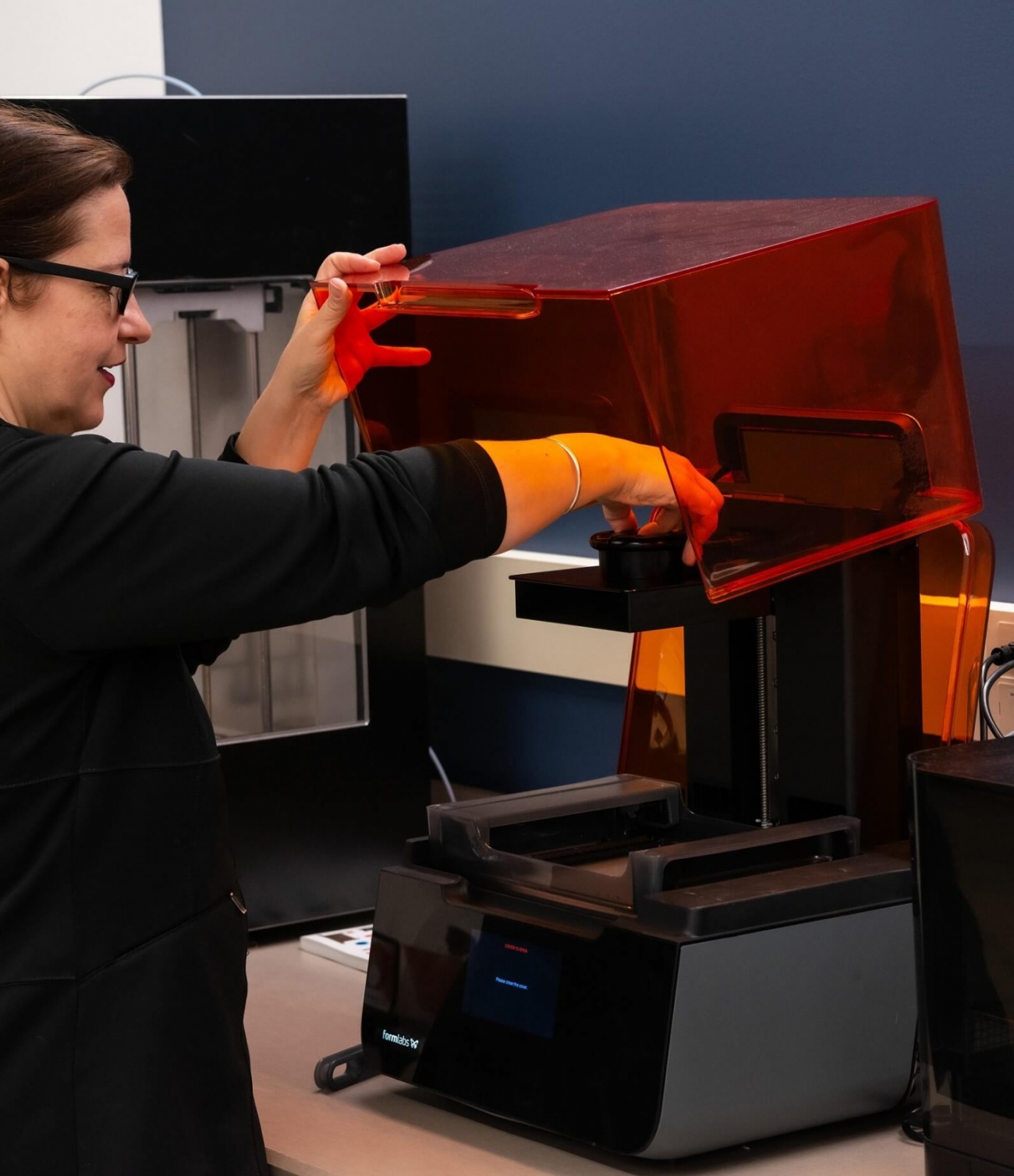
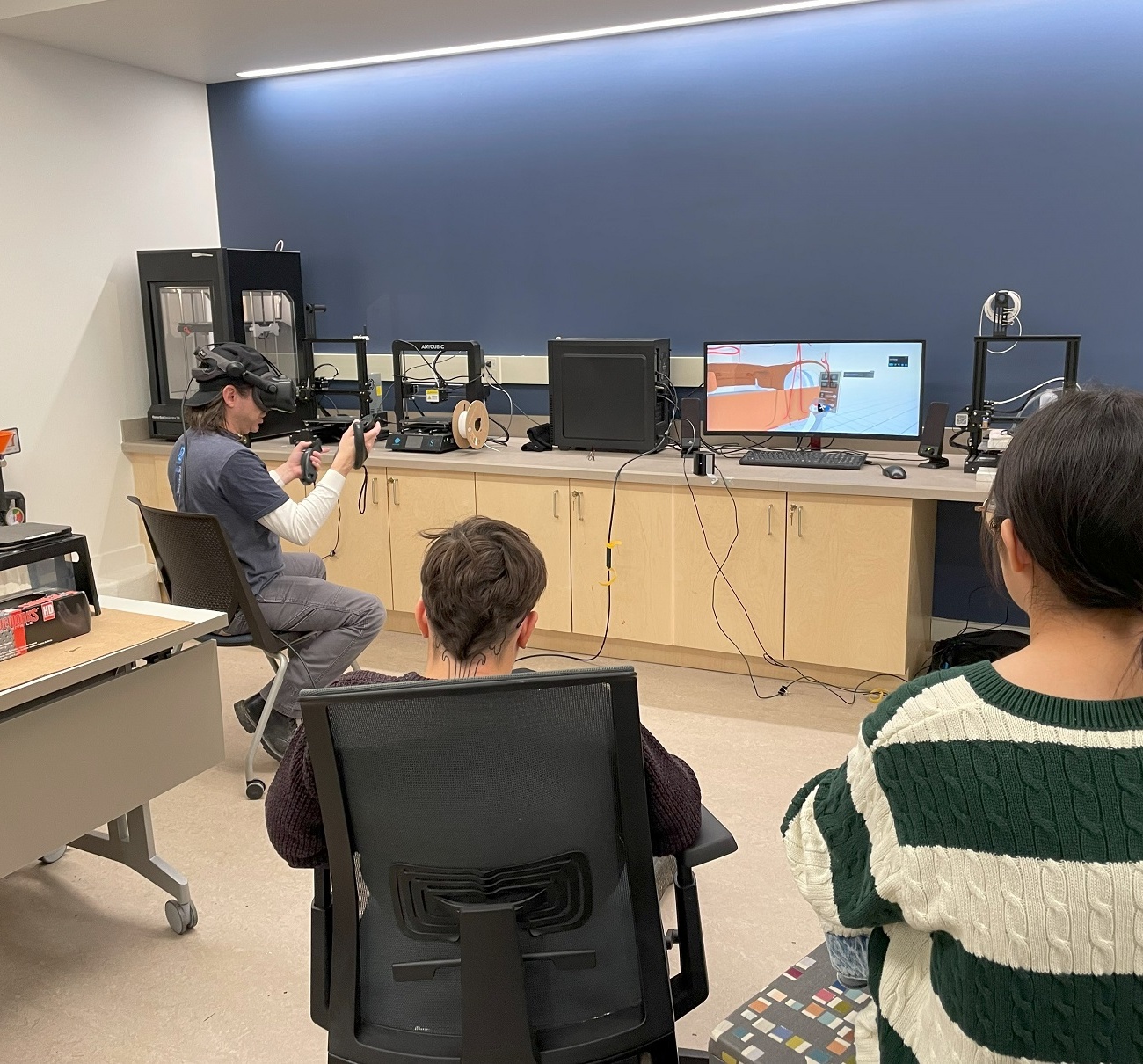
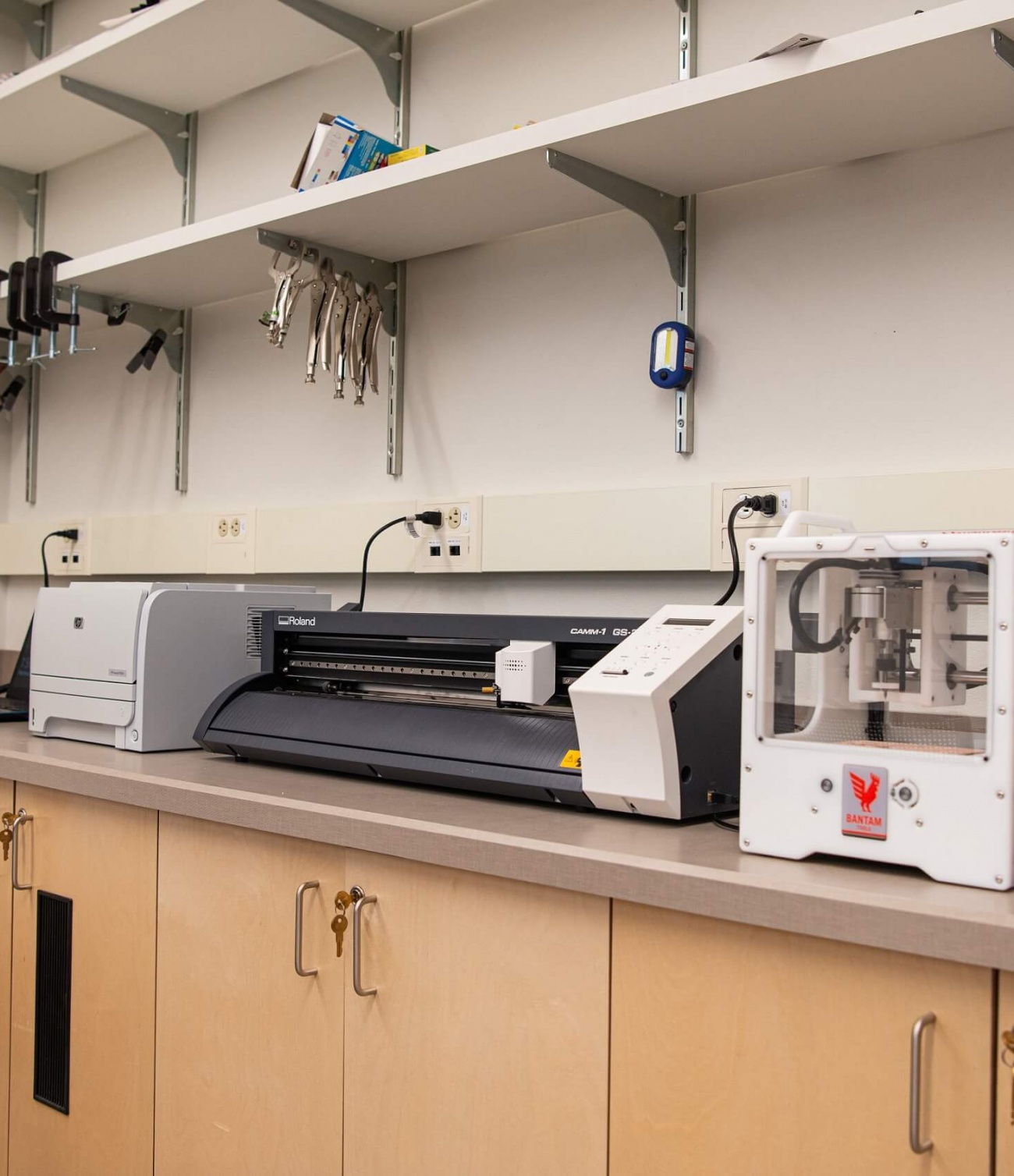
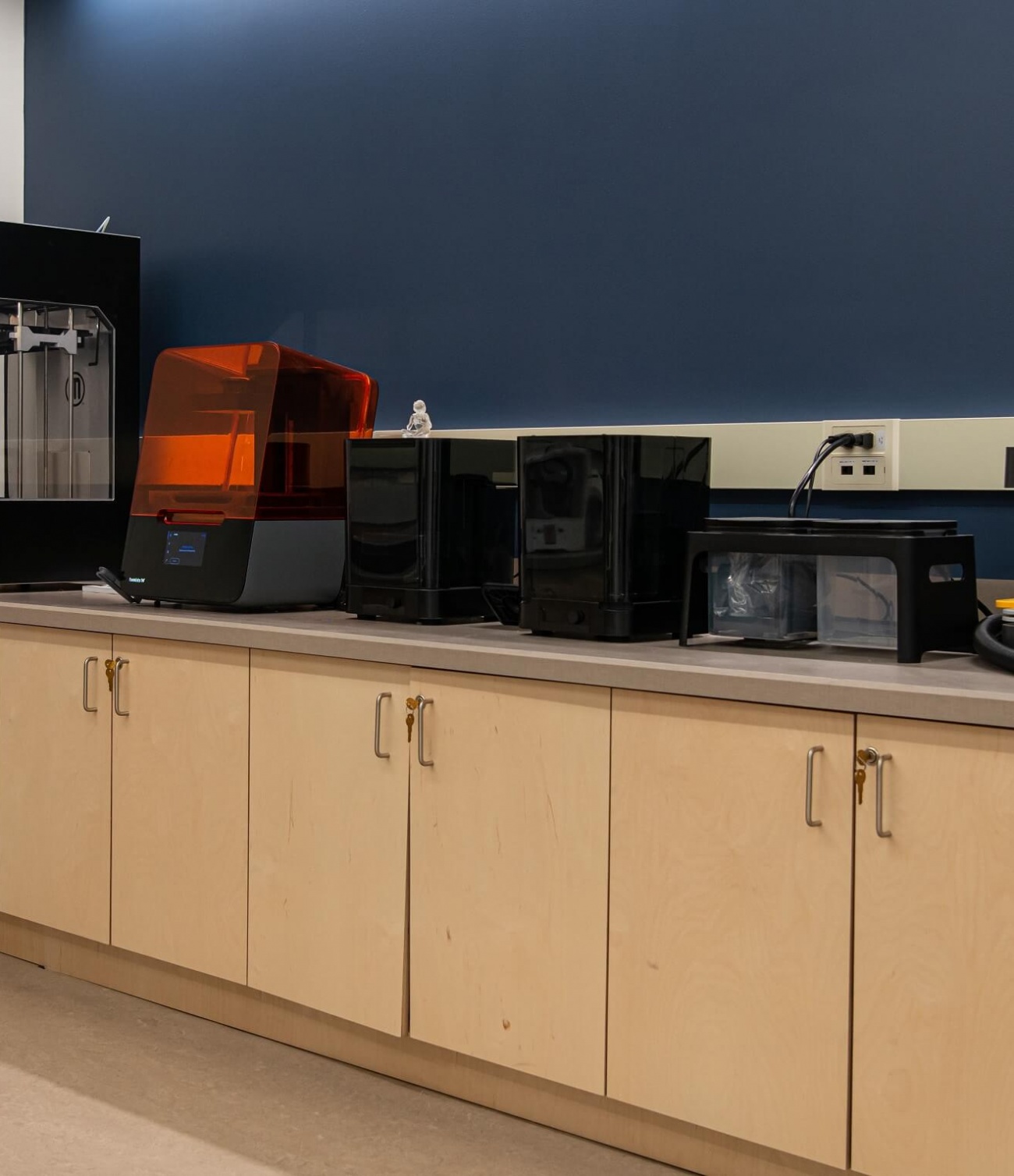
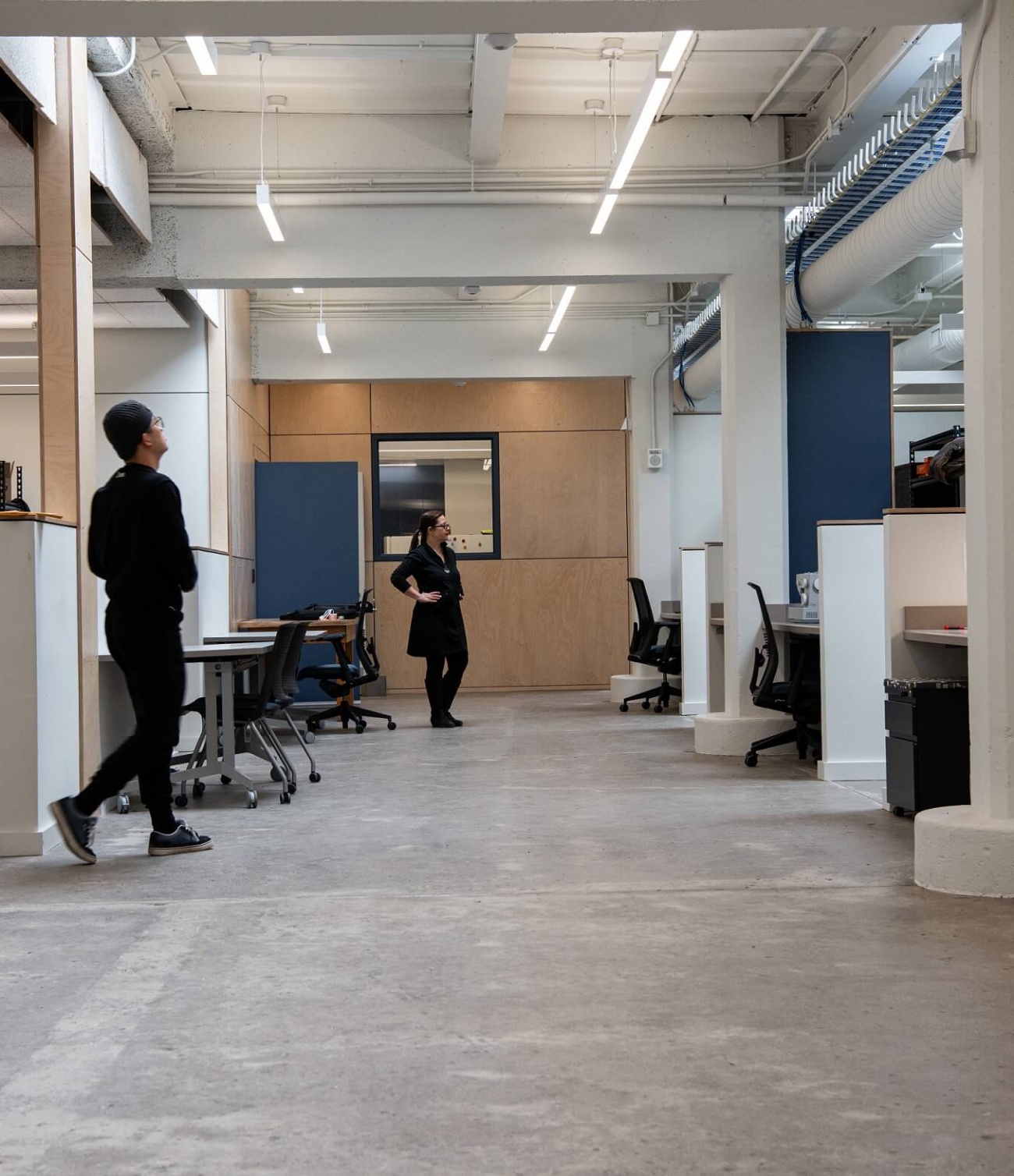
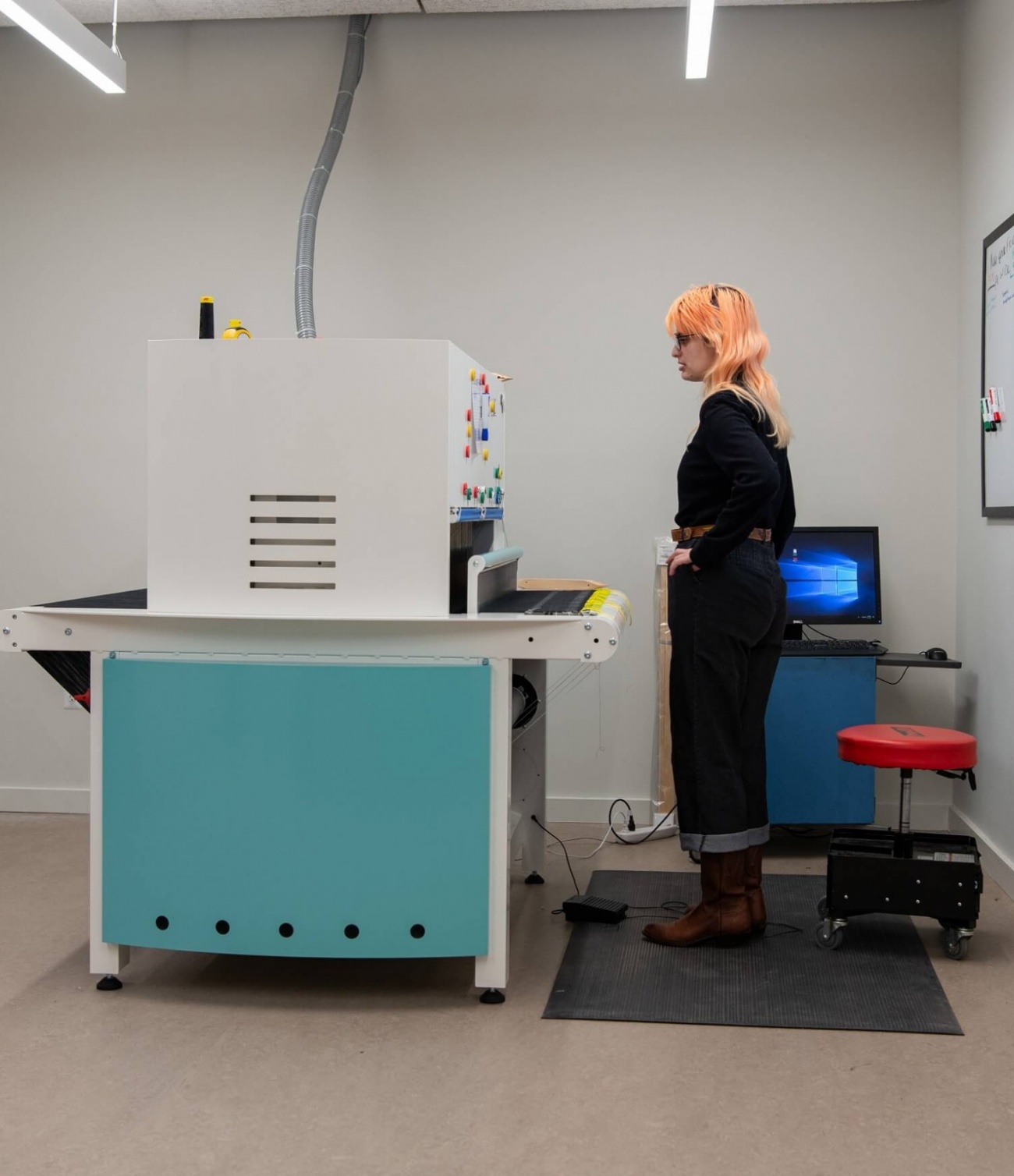
Interaction Design Facilities
Interaction Design Facilities
A state-of-the-art facility with 24-hour lab access and personal studios for students
Shared spaces include soldering and electronics assembly workstations, sewing stations for wearable computing and soft goods, and a Interaction Design equipment lab with digital fabrication equipment. Our critique room is a dark space with a grid for ceiling-mounted cameras, projectors, and VR equipment which doubles as a Mixed Reality Lab.
- Tormach 1100M Four Axis CNC Milling Machine
- Prusa i3 3D Printers
- Makerbot Replicator Z18 Large Build Volume FDM Printer
- Form Labs Form 3 UV SLA Printer
- Tronrud Engineering TC-2 Digital Jacquard Loom
- Bantam Tools Desktop PCB Milling Machine
- Glowforge Laser Cutter
- Mayku vacuum former
- Flat-screen displays
- Projectors
- Shaper Origin Handheld CNC Router
- Creality CR-Scan 3D Scanner
- Roland 24 Vinyl Cutter
- VR Headsets
- Several sewing machines for wearable electronics and soft goods prototyping
Interaction Design students also have access to Cranbrook’s Central Materials Lab for fabrication in metal, wood, ceramics, fiber, and other materials and Central Media Lab which houses large format printers, an embroidery machine, computer stations, a theater, and a photography studio.
